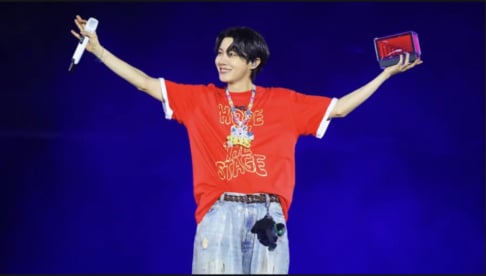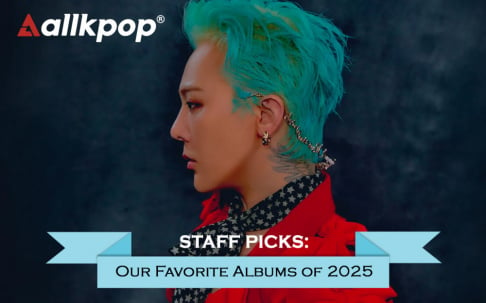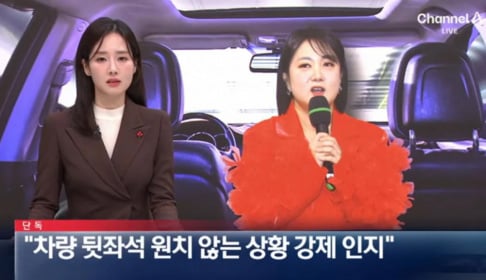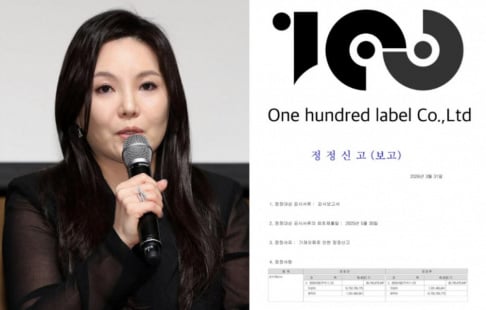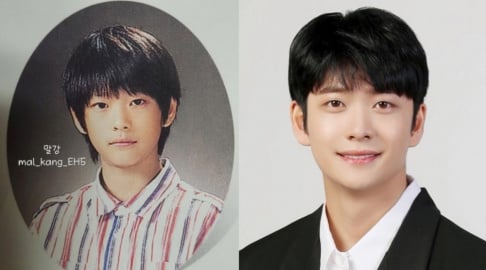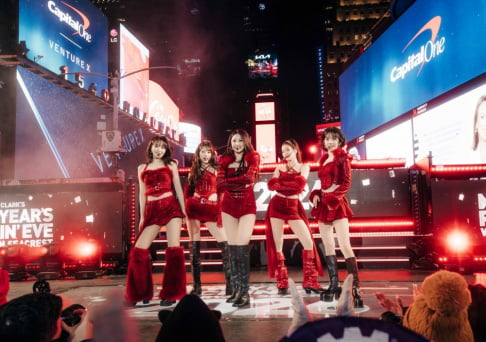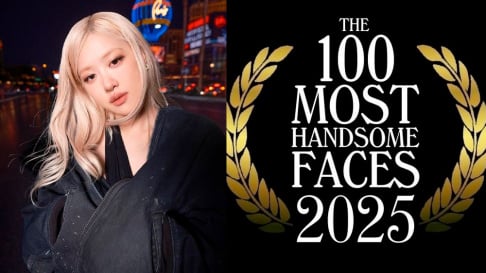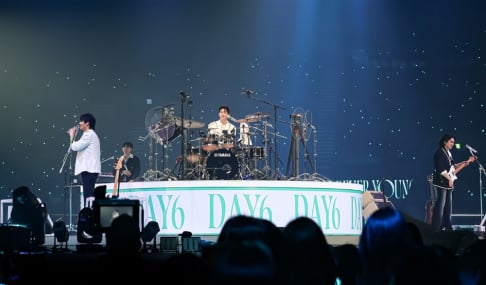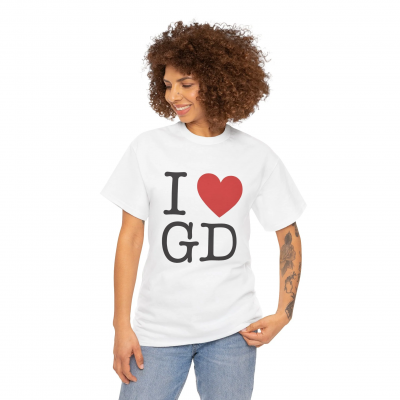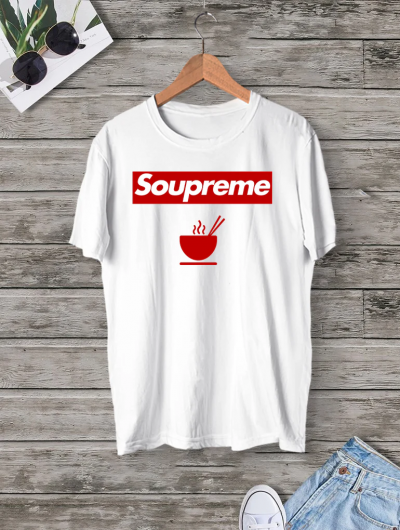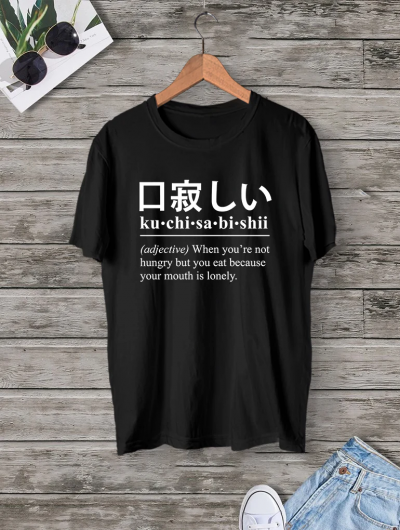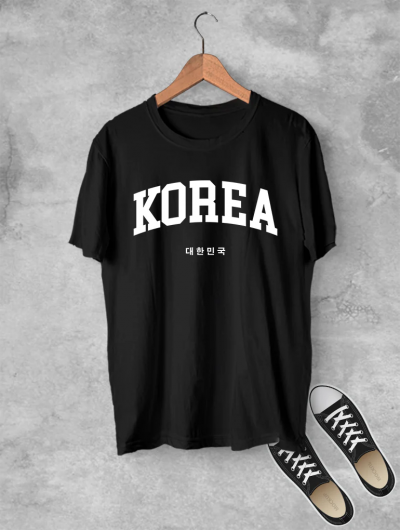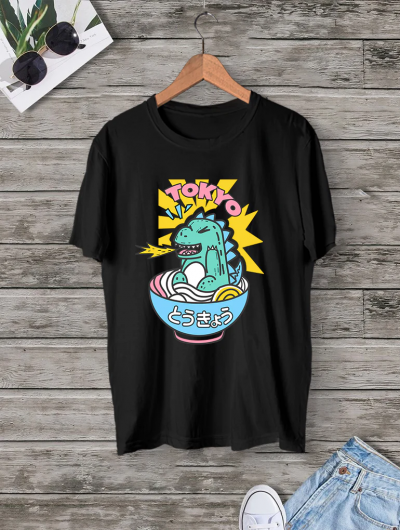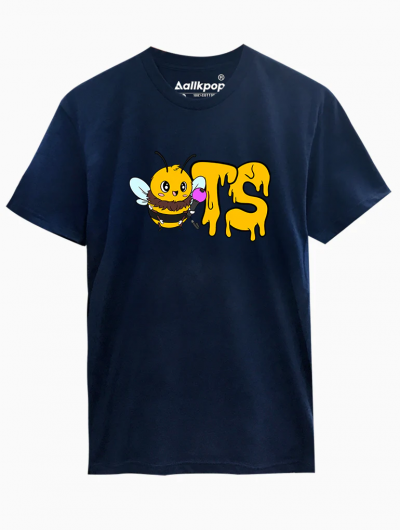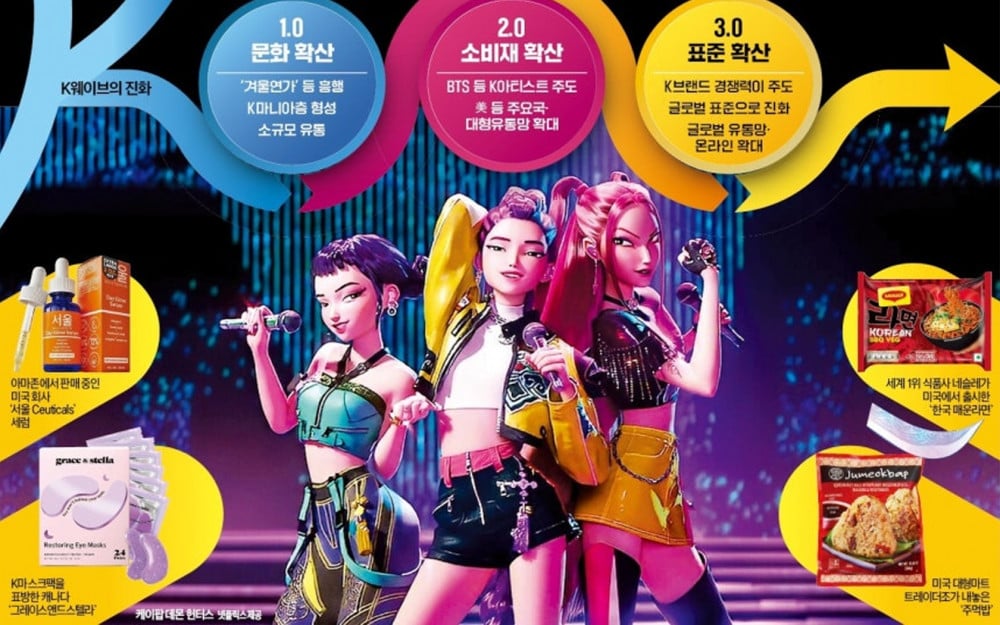
With Korean products such as K-content, K-food, and K-beauty soaring in global popularity, more and more foreign companies are trying to ride the wave. Analysts say the K-wave market, once considered an exclusive domain of Korean companies, has entered a new phase. Experts describe the emergence of the "K-wave 3.0" era, in which Korean and foreign companies are locked in unlimited competition for dominance.
According to Billboard on August 12, "Golden," the OST from the Netflix hit animation film 'K-Pop Demon Hunters,' topped the U.S. Billboard HOT 100 chart. 'K-Pop Demon Hunters' was produced by Sony Pictures, a U.S. subsidiary of Japan's Sony, and distributed on Netflix in the U.S. The music production was handled by Republic Records, under Universal Music Group (UMG) in the U.S. Although it is a distinctly Korean-themed content about K-pop idols, profits went to U.S. and Japanese companies. The entertainment industry estimates the intellectual property (IP) value of 'K-Pop Demon Hunters' at over 1 trillion KRW (approx. 722.1 million USD).
An industry insider said, "'K-Pop Demon Hunters' broke the stereotype that K-content must be made by a Korean director with Korean actors to be considered authentic K-content," adding, "As long as there is capital, anyone, anywhere in the world can now create K-content."
The phenomenon is not limited to K-content. U.S.-based Chinese food chain Panda Express recently launched a chicken menu featuring Samyang Foods’ Buldak Sauce. American supermarket chain Trader Joe’s released Korean-style frozen gimbap, which became such a hit that it sold out. Walmart, the largest retailer in the U.S., began operating K-pop-themed mobile pop-up stores. L’Oréal, the world’s largest cosmetics company, released products in the K-beauty style, such as hyaluronic acid-based skincare.
While it may seem that the market is being taken over, some view this as a part of the K-wave's evolution - from the "K-wave 1.0" era, when dramas such as 'Winter Sonata' drew in niche fan bases, to the "K-wave 2.0" era, when artists like BTS pushed K-products into major retail channels in key countries, and now the "K-wave 3.0" era, in which K-brands have now become part of the global mainstream.
Lee Young Ae, a consumer science professor at Incheon National University, said, “The fact that global companies are continuously launching K-wave-related products means its influence in the global market has grown significantly. Korean companies must strengthen their competitiveness in content, products, and marketing to keep up, while the government should develop a comprehensive strategy that includes IP protection.”
While the 'K-Pop Demon Hunters' craze continues after its theme song topped the Billboard chart, reactions in Korea's entertainment industry have been mixed, as massive profits are going to the U.S. and Japanese companies instead of Korean ones. A Korean entertainment official preparing to expand overseas using the K-pop artist training system said, “If K-pop content doesn’t have to be made by Korean companies, even if it goes viral globally, the domestic industry may not enjoy the actual benefits.”
The domestic music industry is on edge after the success of 'K-Pop Demon Hunters' proved that K-pop content can become a hit without passing through Korean entertainment agencies, simply by using the U.S. production system. While 'K-Pop Demon Hunters' helped promote Korean culture worldwide, it also shattered the long-standing idea that Korean cultural products are Korea’s exclusive domain. Experts say the era has arrived when companies worldwide must compete for the cultural code known as the K-wave. This shift, first seen in entertainment, is now rapidly spreading to consumer goods companies.
In May, Nestlé’s U.S. subsidiary Maggi launched “Korean Spicy Ramyun,” printing the word “ramyun” in Hangul on its packaging to emphasize its K-food identity. Trader Joe’s has rolled out private label (PB) products such as rice balls, bibim noodles, and japchae bibimbap, managing K-food as a separate category.
Previously, McDonald’s, Shake Shack, and Burger King all released Korean-style spicy burgers to great success. Global sauce brand Heinz has also launched Korean-style barbecue sauce.
In the cosmetics sector, foreign companies are challenging the dominance built by K-beauty brands, which have long been associated with affordable yet high-quality functional products that set trends. As the K-beauty market has rapidly expanded, brands imitating or inspired by K-beauty have surged.
TikTok influencer Mikayla Nogueira, with 16.3 million followers, launched a beauty brand in March focused on “glass skin,” a hallmark of K-beauty’s dewy, radiant complexion. “Seoul Ceuticals,” a brand sold on Amazon, is actually American but markets itself as K-beauty. Other foreign brands such as “Seoul Mamas” and “Grace & Stella” also sell Korean-style cosmetics. As foreign companies launch K-beauty-inspired lines, the number of U.S. clients for Korean ODM cosmetics manufacturer Cosmax rose from 150 in 2023 to 220 this year.
Although new competitors have entered the K-food and K-beauty markets, they are not yet considered a major threat. However, with the market environment shifting, Korean companies are staying alert, focusing on swift market research and continuous R&D to keep releasing differentiated products. A food industry insider said, “We’ve been studying the global market and investing in R&D for a long time, so we have distinct competitive strengths.”
Some analysts believe foreign firms will struggle to match the competitiveness of Korean companies, which have honed their capabilities in one of the world’s most demanding and trend-sensitive consumer markets. A beauty industry official noted, “Korean companies have secured global competitiveness through 20 years of trial, error, and innovation, built by competing in the toughest home market with the most demanding consumers.”
SEE ALSO: 'Show! Music Core' canceled on January 3rd as MBC airs ‘Gayo Daejejeon’ rebroadcast
 SHARE
SHARE
